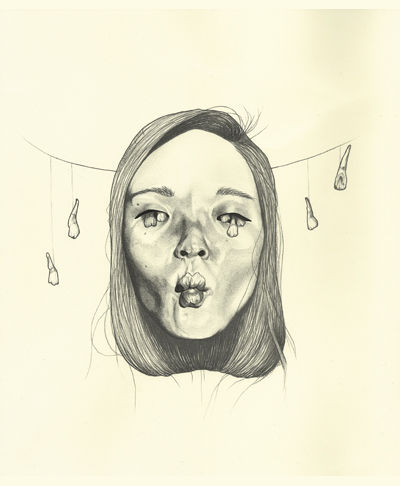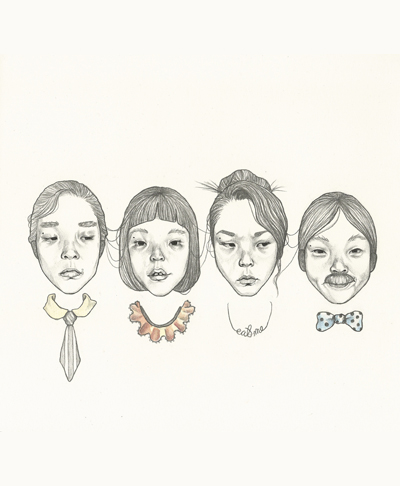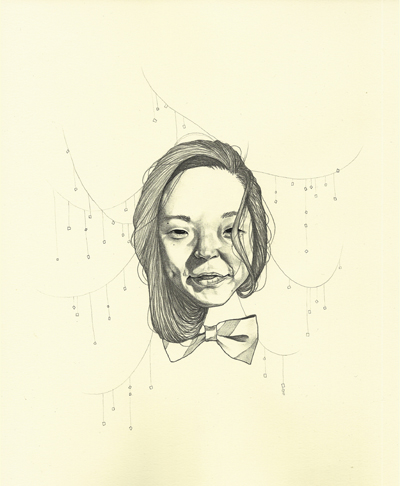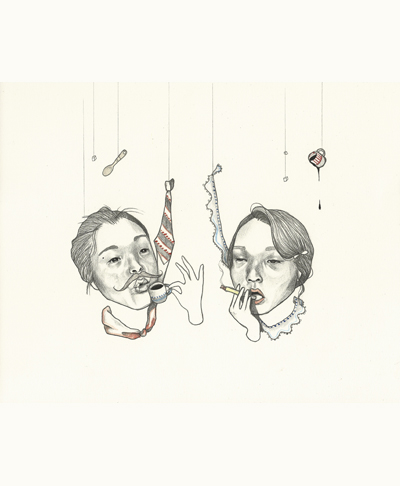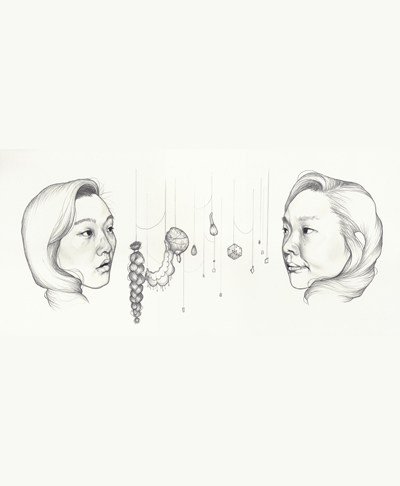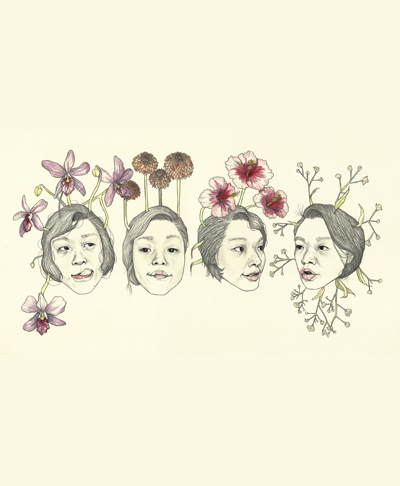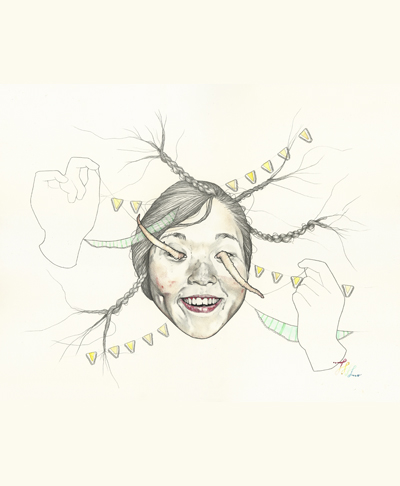⁄Attention to Detail
Emerging artist Haejung Lee uses her seemingly simplistic artwork to tell complex stories.
Living in Toronto has benefited Haejung Lee’s artwork in more ways than one. The York University Visual Arts student never has a shortage of ideas—often she will turn to the people of the city for inspiration. If you looked through her things, you would likely find an abundance of notes she jotted down during random moments of creativity. Finding a way to document the finer details in everyday life is just as important to this emerging artist as creating realistic pieces.
Jesica Hurst: Can you start by describing the kind of art you create as well as what mediums you use?
Haejung Lee: I mainly use pencil to draw. I like to take inspiration from photographs, which makes the drawings realistic. I also like to keep a lot of detail within my work.
JH: What first inspired you to create this kind of art?
HL: In the beginning, I was focusing more on the technical stuff—how to make the drawings detailed or more realistic. Now it’s more narrative-based, and there’s a lot of story within the work I make.
My inspiration usually comes from little details within life that people often miss or ignore.
JH: You were born in South Korea but are currently based in Toronto. How has living in these two completely different places affected you creatively?
HL: In an indirect way, it has had an effect on my work in a lot of ways because there is a huge culture difference, and I’ve had to learn to adapt. Because of the area I grew up in, I experienced a lot of racism and discrimination, so trying to focus on people’s individuality within my work kind of came out of that.
JH: You are currently working toward your BFA in Visual Arts at York University. Could you describe some of the positive and negative aspects of going to school for something you love to do?
HL: I have definitely learned a lot about the contemporary art world that I wouldn’t have known if I didn’t go to school, and York University also has a lot of hands-on studios.
The negative thing about school is there are barriers within the studios that I take because some of the professors have their own preferences. In general, I’m sure that it is a form of struggle for all visual art students anywhere in the world to have professors preferring their own method of teaching based on their own style.
JH: Will it be difficult for you to compromise your personal aesthetic once you start working for clients?
HL: I really don’t like following rules and stuff like that. I’m sure I’ll attract clients who are creative enough to discuss things, and hopefully we could come to an agreement on an idea. I will be lenient to decide on some of the elements, but I wouldn’t like it if people told me exactly what to do.
JH: You just returned from a month-long adventure in Europe. What did you take away from the trip?
HL: There are a lot of interesting people there. I thought Toronto had a lot of diversity! Visiting a variety of galleries in Europe has also made me think a lot more about paying attention to details.
JH: Many tourists feel the need to document their experiences so they can refer to them in the future, much like you did on www.aphotoor2aday.tumblr.com. Why did you make the decision to do this?
HL: I wanted to do it for myself, because I kind of have an obsession with documentation. [Using Tumblr made it] easy to upload in that moment—I don’t like to keep a photograph to look at and think about before uploading it a month later. It loses the quality of living in the moment.
JH: Where do you expect to see yourself in five years?
HL: Five years? With my work, I try to live in the moment. I don’t like to plan things—I just want to take things day by day. In five years, it would be nice to be doing what I love.
